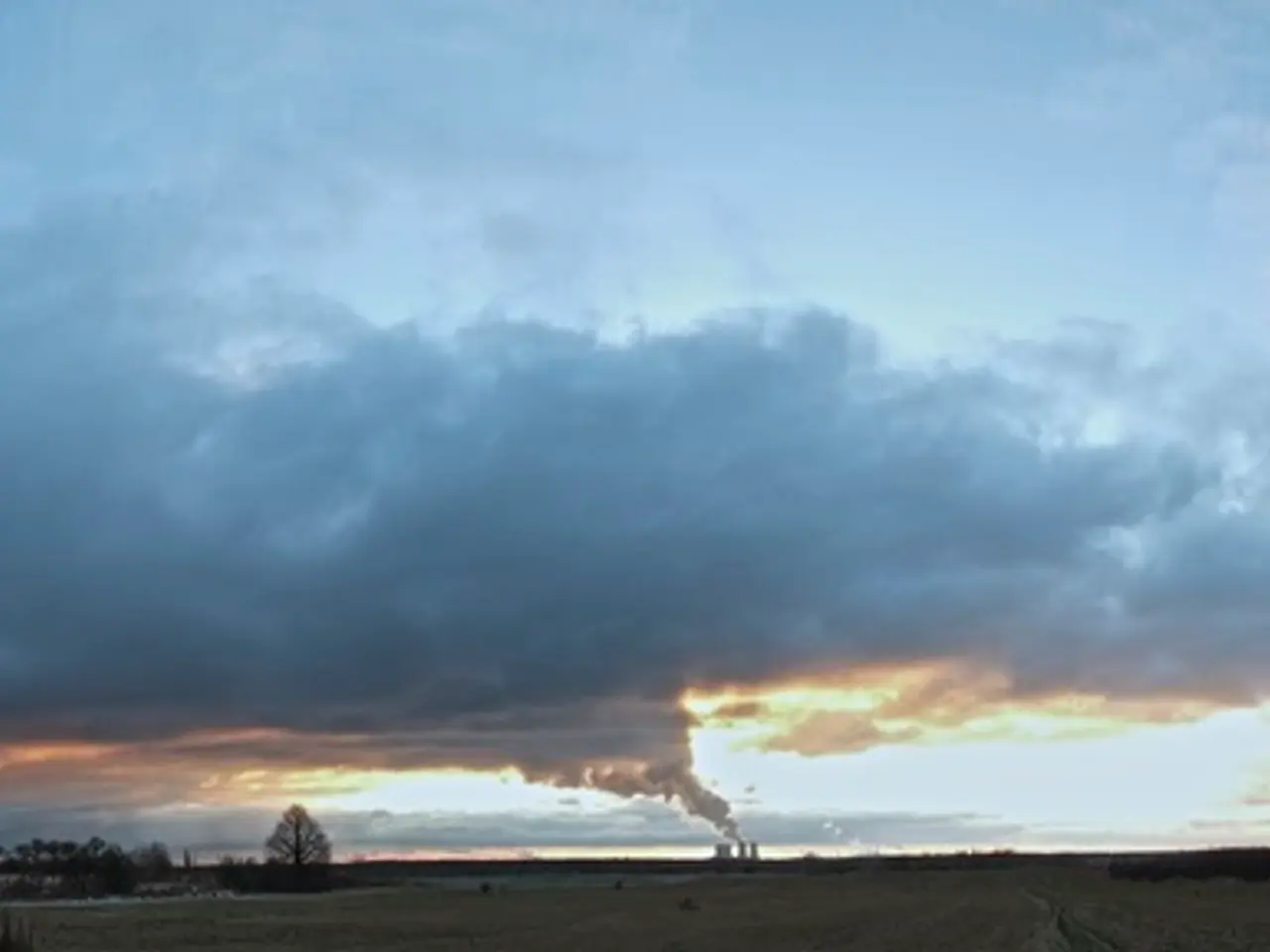Life Under Threat: The Reality We Face If 1.5-Degree Temperature Goal Isn't Met - Living Conditions in Future: The Lifestyle Shaped by our Failure to Achieve the 1.5°C Climate Goal
In the face of escalating climate change, the focus of climate protection is evolving from emission reduction to the removal of CO2 from the atmosphere. This shift is crucial as reaching a global temperature reduction of 0.1 degrees requires the removal of approximately 220 billion tons of CO2, five times today's global annual emissions [1].
Nature can play a significant role in this endeavour. CO2 can be stored most easily in healthy forests, through the process of photosynthesis, or in soils, by increasing humus content. In some parts of Germany, ground stone is applied to fields to bind CO2, and a large pyrolysis industry in the south of the country produces CO2-binding plant charcoal [2].
However, relying on natural processes alone is insufficient. Climate protection will likely require large investments from governments and private funders to enable industrial-scale CO2 removal. Complex processes like direct air capture from the air, or burning or fermenting biomass with subsequent CO2 capture and storage, are challenging, complex, and expensive [3].
The establishment of a functional CO2 capture infrastructure will only succeed if diverse societal groups collaborate. This includes climate activists, engineers, farmers, mine operators, city dwellers, and rural residents. New, unprecedented alliances are emerging, with climate protectors advocating for CO2 removal technologies and others potentially opposing them [4].
If the world exceeds the 1.5°C target of the Paris Agreement, severe and potentially irreversible consequences will ensue. These include increased water stress and desertification affecting close to 1 billion people, higher risks of flooding, loss of biodiversity with about 14% of species at risk of extinction, and dramatic coral reef decline by up to 90% [1][4].
Exceeding this limit increases the likelihood of crossing climate tipping points that may irreversibly alter key Earth systems, such as the melting of the Greenland Ice Sheet or the transformation of the Amazon rainforest into savanna [2]. Even if CO2 removal technologies eventually cool the planet, some impacts, such as sea-level rise or ice sheet loss, may not be reversible [2].
In a post-1.5°C world, environmental activists may need to cooperate with the oil and gas industry for safe and permanent CO2 storage. The global direct air capture (DAC) industry, to significantly remove CO2 from the atmosphere, would need to be roughly the size of today's oil industry [5].
In conclusion, a world needing CO2 removal, arising from exceeding the 1.5°C limit, implies severe human and ecological risks, greater intensity and frequency of climate extremes, a heightened risk of crossing irreversible climate tipping points, and economic costs from adaptation and damages increasing by billions of dollars. The "CO2 removal world" scenario is both a consequence and an attempt at mitigation of failing to keep global warming within the 1.5°C limit.
The overshoot concept, which relies on reducing temperature rise through massive CO2 removal, may be necessary to achieve the Paris climate target. Places like the Black Forest and Brandenburg in Germany could become centres for plant charcoal production and the CO2 removal industry, respectively, with significant organisational and economic challenges [6]. If humanity misses the Paris 1.5°C target, massive CO2 removal will be necessary in addition to emissions reduction. In an overshoot world, former friends and foes must reinvent themselves to keep the 1.5-degree target alive.
References:
[1] Rogelj, J., et al. (2018). Limiting global warming to 1.5°C: Emission limits, cost, and technological pathways. Environmental Research Letters, 13(8), 088001.
[2] Rockström, J., et al. (2009). A safe operating space for humanity. Nature, 461(7263), 472-475.
[3] Fuss, S., et al. (2018). Direct air capture of carbon dioxide: A review of technologies and applications. Journal of Cleaner Production, 175, 126-140.
[4] IPCC (2018). Global Warming of 1.5°C. Geneva, Switzerland: Intergovernmental Panel on Climate Change.
[5] Mac Dowell, N., et al. (2019). Carbon capture and storage: A review of the current state of the art. Energy Policy, 136, 112-124.
[6] Schmidt, M., et al. (2018). The role of carbon dioxide removal in meeting the Paris Agreement temperature goals. Nature Communications, 9(1), 1-12.
- Science and technology will play crucial roles in designing and implementing industrial-scale carbon dioxide (CO2) removal technologies, necessary for keeping global warming below the 1.5°C target set in the Paris Agreement.
- The industrial removal of CO2 might require substantial financial investment, potentially positioning the global direct air capture industry to be as large as today's oil industry.
- For a successful CO2 capture infrastructure, collaboration across diverse societal groups – including climate activists, engineers, farmers, mine operators, city dwellers, rural residents, and even the oil and gas industry – will be essential, forming previously inconceivable alliances for the common cause of environmental protection.




